Most Cited
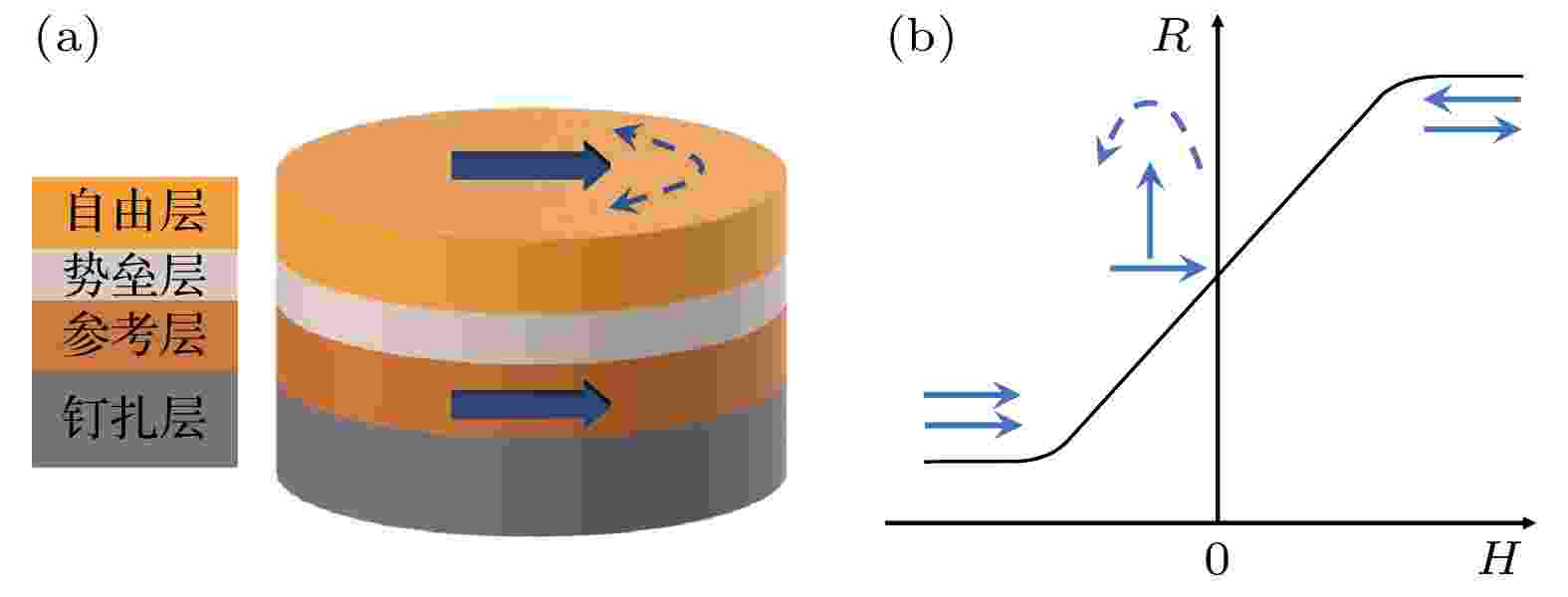
2022, 71 (5): 058504.
doi: 10.7498/aps.71.20211883
Abstract +
Sensors play an important role in Internet of Things (IoT) industry and account for a rapidly growing market share. Among them, the magnetic sensor based on tunneling magnetoresistance (TMR) effect possesses great potential applications in the fields of biomedical, navigation, positioning, current detection, and non-destructive testing due to its extremely high sensitivity, small device size and low power consumption. In this paper, we focus on the development of TMR sensor technology routes, covering a series of research advances from a sensor transducer to three-dimensional magnetic field detection, and then to the applications. Firstly, we recall the development history of TMR sensors, explain its working principle, and discuss the method to improve the output linearity of single magnetic tunnel junction. Next, we state the Wheatstone-bridge structure, which can inhibit temperature drift in detail and review several methods of fabricating the full bridge of TMR sensors. Furthermore, for the market demand of three-dimensional magnetic field detection, we summarize the methods of designing and fabricating three-dimensional sensing structure of the TMR sensor. At the same time, we list several optimization schemes of TMR sensor performance in terms of sensitivity and noise level. Finally, we discuss two types of emerging applications of TMR sensors in recent years. The TMR sensors can also be used in intelligence healthcare due to their ultra-high sensitivity. In addition, devices from the combination of spin materials and MEMS structure have attracted wide attention, especially, because of the large commercial market of microphones, spin-MEMS microphones utilized TMR techniques will be the next research hotspot in this interdisciplinary field.

2022, 71 (11): 110701.
doi: 10.7498/aps.71.20220099
Abstract +
When capturing images under low-light lighting conditions, the resulting images often suffer low visibility. Such low-visibility images not only affect the visual effect but also cause many difficulties in practical application. Therefore, image enhancement technology under low-light conditions has always been a challenging problem in image algorithms. Considering that most of the existing image enhancement methods are based on the RGB color space enhancement technology, the correlation among the RGB three primary colors is ignored, which makes the color distortion phenomenon easy to occur when the image is enhanced. To solve the problems of poor image visibility and color deviation under low-light conditions, in this paper an advanced Retinex network enhancement method is proposed. In the method, firstly the low-light RGB image is transformed into HSV color space, the Retinex decomposition network is used to decompose and enhance the value component separately, and thus increasing the resolution of the value component through up-sampling operation; then, for the hue component and saturation component, the nearest neighbor interpolation is used to increase their resolutions, and the enhanced value component is combined to convert back to RGB color space to obtain the initial enhanced image; finally, the wavelet transform image fusion technology is used to fuse with the original low-light image to eliminate the over-enhanced part in the initial enhanced image. The analysis of experimental results shows that the method proposed in this paper has obvious advantages in brightness enhancement and color restoration of low-light images. Especially, comparing with the original Retinex network method, the NIQE value decreases by an average of 19.49%, and the image standard deviation increases by an average of 41.35%. The algorithm proposed in this paper is expected to be effectively used in the fields of security monitoring and biomedicine.
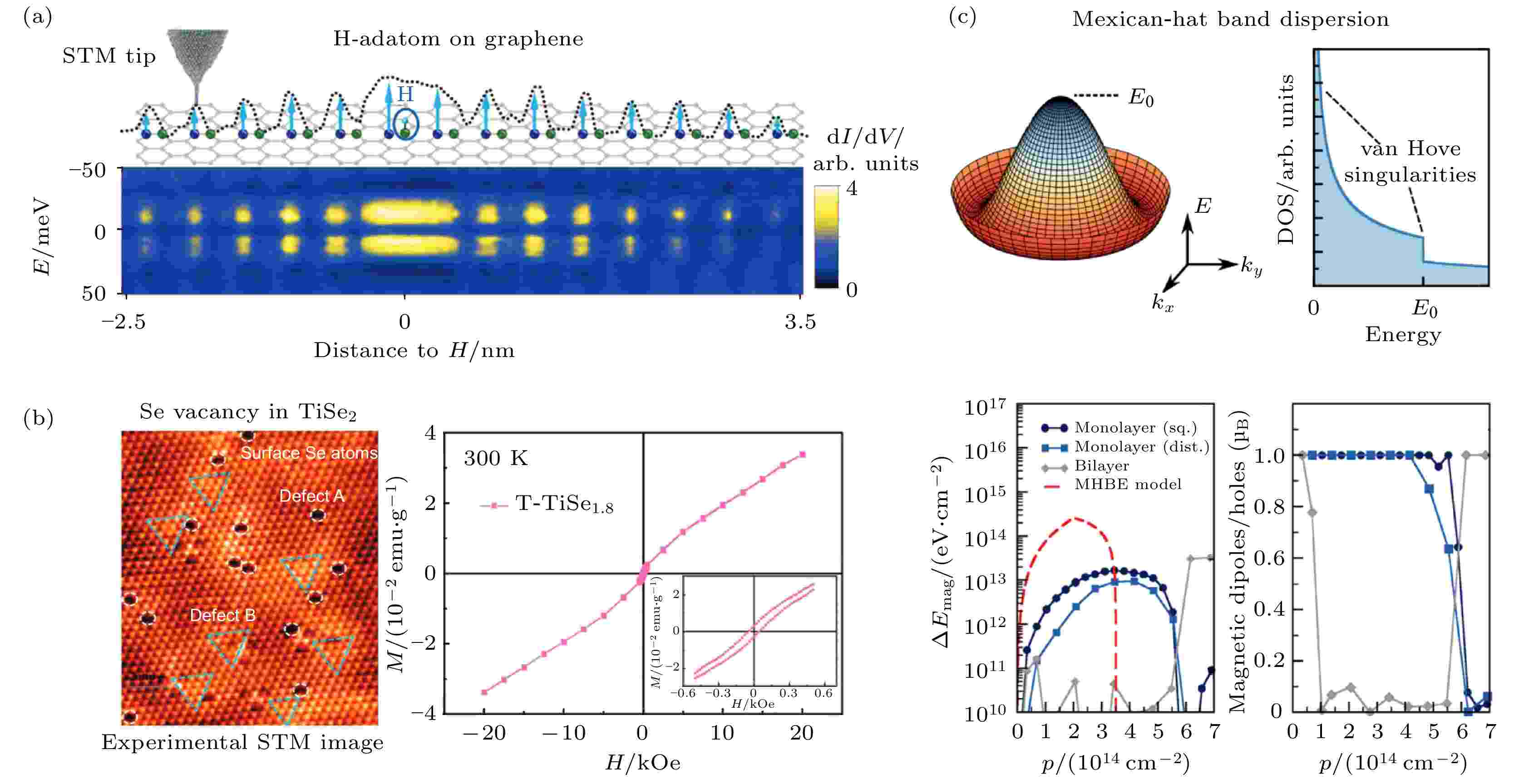
2022, 71 (12): 127504.
doi: 10.7498/aps.71.20220301
Abstract +
Two-dimensional (2D) magnetic materials with magnetic anisotropy can form magnetic order at finite temperature and monolayer limit. Their macroscopic magnetism is closely related to the number of layers and stacking forms, and their magnetic exchange coupling can be regulated by a variety of external fields. These novel properties endow 2D magnetic materials with rich physical connotation and potential application value, thus having attracted extensive attention. In this paper, the recent advances in the experiments and theoretical calculations of 2D magnets are reviewed. Firstly, the common magnetic exchange mechanisms in several 2D magnetic materials are introduced. Then, the geometric and electronic structures of some 2D magnets and their magnetic coupling mechanisms are introduced in detail according to their components. Furthermore, we discuss how to regulate the electronic structure and magnetism of 2D magnets by external (field modulation and interfacial effect) and internal (stacking and defect) methods. Then we discuss the potential applications of these materials in spintronics devices and magnetic storage. Finally, the encountered difficulties and challenges of 2D magnetic materials and the possible research directions in the future are summarized and prospected.

2022, 71 (23): 233601.
doi: 10.7498/aps.71.20221398
Abstract +
In the era of highly thin, multi-functional and integrated electronic devices, it will inevitably lead to the heat accumulation inside the composite material, thereby seriously affecting the operation stability and service life of the equipment. How to realize the rapid and efficient heat conduction and heat dissipation of dielectric materials has become a bottleneck problem restricting the further development of electronic devices. The intrinsic thermal conductivity of traditional polyimide is low, which limits its application in electrical equipment, smart grid and other fields. The development of new high thermal conductivity polyimide dielectric film materials has become the focus of research. This paper introduces the thermal conduction mechanism of composite materials, summarizes the research progress and development status of thermally conductive polyimide films in recent years, and focuses on the effects of thermally conductive fillers, interface compatibility, and molding process of the thermal conductivity of materials. Finally, some key scientific and technical issues in the research are summarized and prospected in combination with the future development needs of thermally conductive polyimide composite dielectric materials.
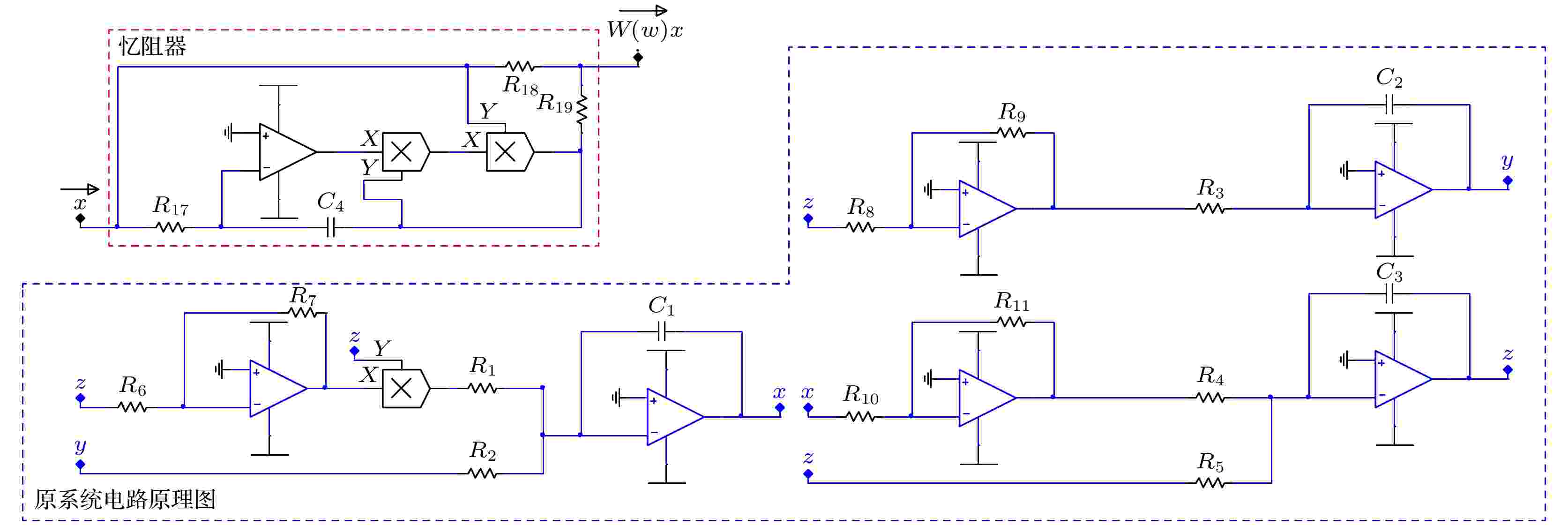
2022, 71 (16): 160502.
doi: 10.7498/aps.71.20220593
Abstract +
Using memristors to construct special chaotic systems is highly interesting and meaningful. A simple four-dimensional memristive chaotic system with an infinite number of coexisting attractors is proposed in this paper, which has a relatively simple form but demonstrates complex dynamical behavior. Here, we use digital simulations to further investigate the system and utilize the bifurcation diagrams to describe the evolution of the dynamical behavior of the system with the influence of parameters. We find that the system can generate an abundance of chaotic and periodic attractors under different parameters. The amplitudes of the oscillations of the state variables of the system are closely dependent on the initial values. In addition, the experimental results of the circuit are consistent with the digital simulations, proving the existence and feasibility of this memristive chaotic system.
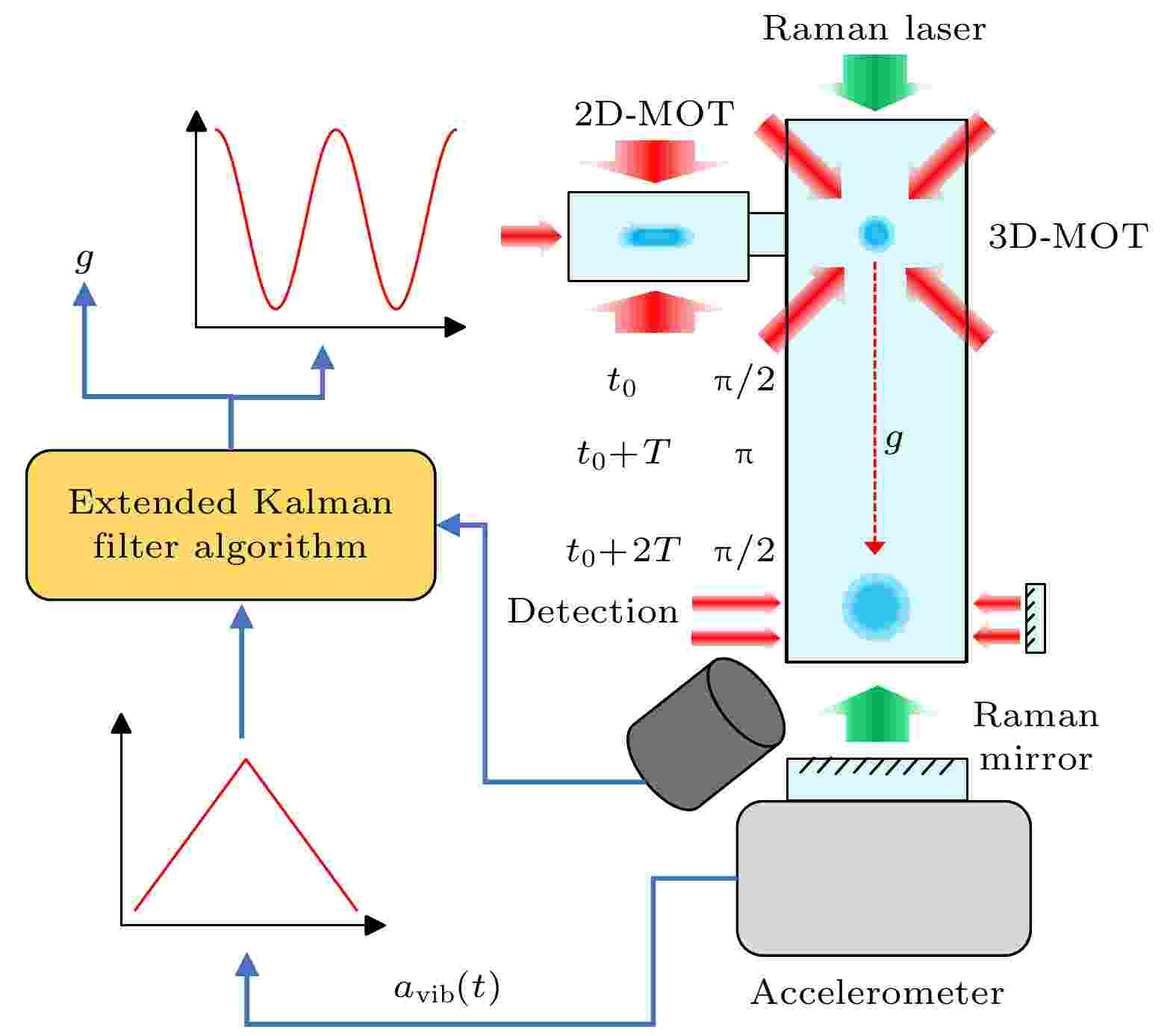
2022, 71 (13): 133702.
doi: 10.7498/aps.71.20220071
Abstract +
The precision dynamic measurement of absolute gravity based on the cold atom interferometer can provide a new method for marine gravimetry, so that it has attracted more attention. Based on the homemade shipborne cold atom interferometric absolute gravity measurement system, we carry out a series of measurement experiments in a certain area of the South China Sea. Under dynamic conditions, the suppression of measurement noise is essential for the improvement of the measurement performance. According to the physical model of the measurement system, in this paper a data processing method is proposed based on the extended Kalman filter algorithm for the absolute gravity dynamic measurement. The observed atomic interference fringe data are filtered in the time domain to estimate the absolute gravity value. Based on this processing method, the sensitivity of absolute gravity measurement under the condition of ship speed less than 2.1 km/h is improved from 300.2 mGal/Hz1/2 to 136.8 mGal/Hz1/2 (T = 4 ms). Comparing the processed data with the data calculated from the earth gravity model (XGM2019), it is found that both of the data are in good agreement. These results confirm the effectiveness of the data processing method proposed in this paper, and provide a new processing method of suppressing the measurement noise of shipborne cold atom interferometric absolute gravity measurement system.
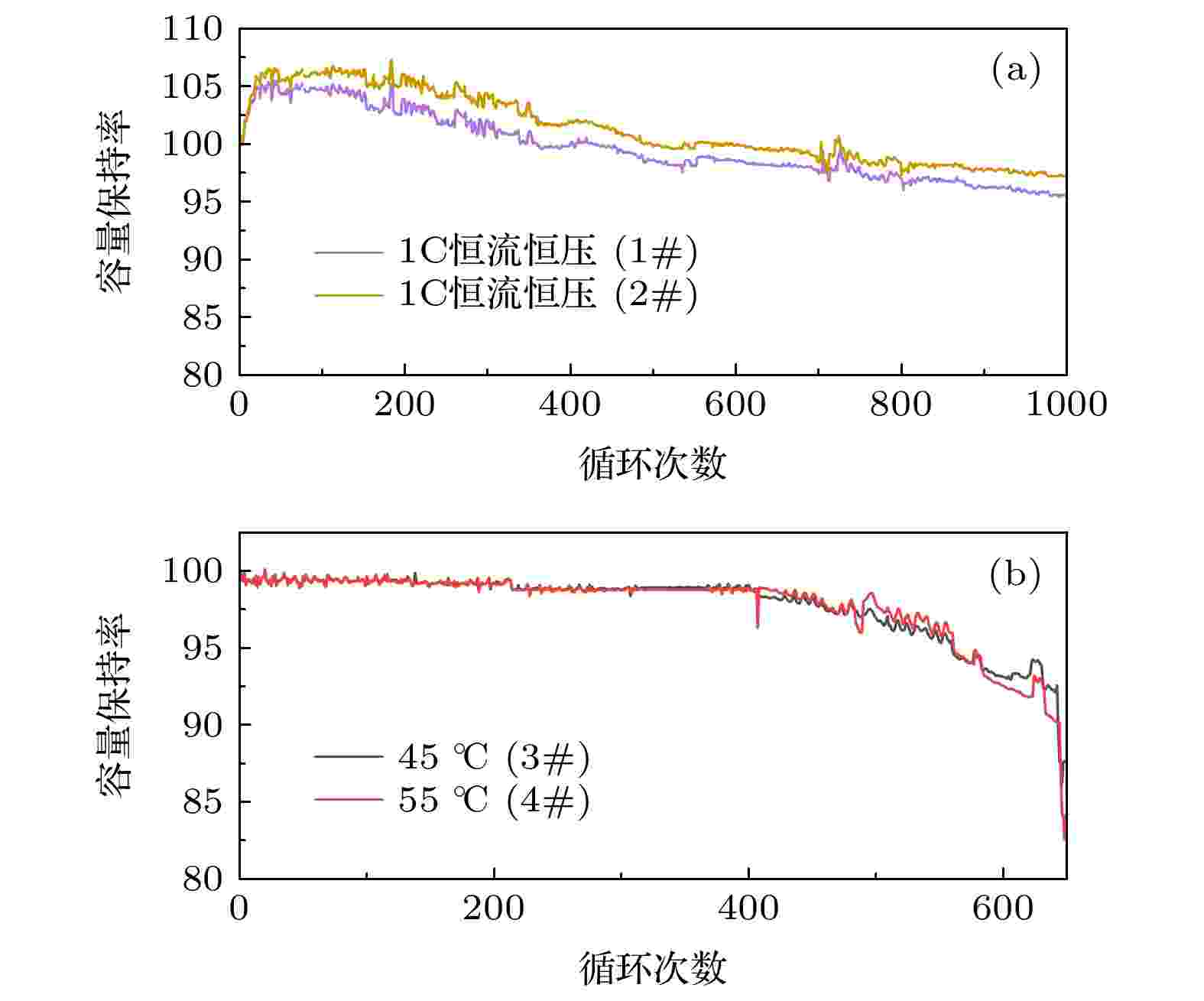
2022, 71 (3): 038803.
doi: 10.7498/aps.71.20211401
Abstract +
The current electrochemical models of lithium-ion power batteries have many problems, such as complex models, difficult modeling, low computational efficiency and poor aging evaluation effect. In this paper, a mechanism model (ADME) considering battery decay and aging is proposed. In this paper, the pseudo-two-dimensions (P2D) electrochemical model is first reduced by finite difference method to obtain a simplified P2D (SP2D). On the basis of SP2D model, a mechanism model considering battery decay and aging is proposed, which is based on the degradation and aging phenomenon caused by the side reactions between positive and negative electrodes. Secondly, the multivariate deviation compensation least square method is used to identify the model parameters. Finally, the terminal voltage output of SP2D model is compared with that of ADME model and the outputs from the two models are also analyzed through the cycle experiment on power battery aging performance, constant current and pulse condition. The results show that the ADME model is relatively simple, has high computational efficiency and estimation accuracy, and can effectively evaluate the aging decline of battery capacity, and obtain the ideal external characteristic curve of lithium ion power battery.
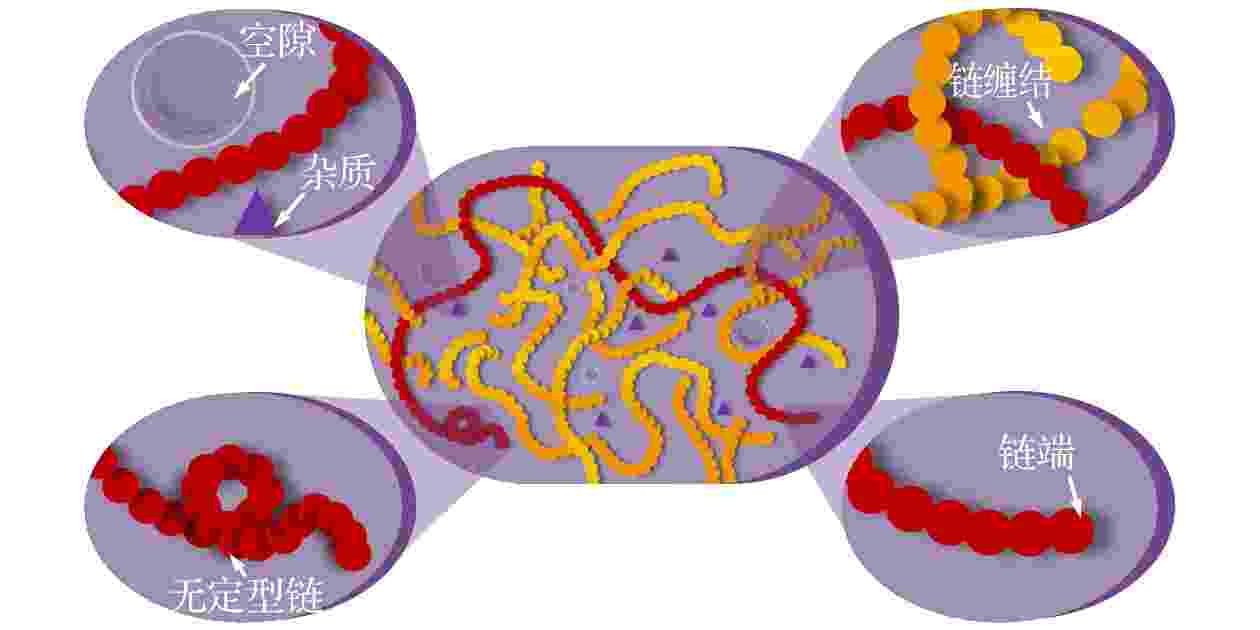
2022, 71 (2): 023601.
doi: 10.7498/aps.71.20211876
Abstract +

2022, 71 (3): 030501.
doi: 10.7498/aps.71.20211549
Abstract +
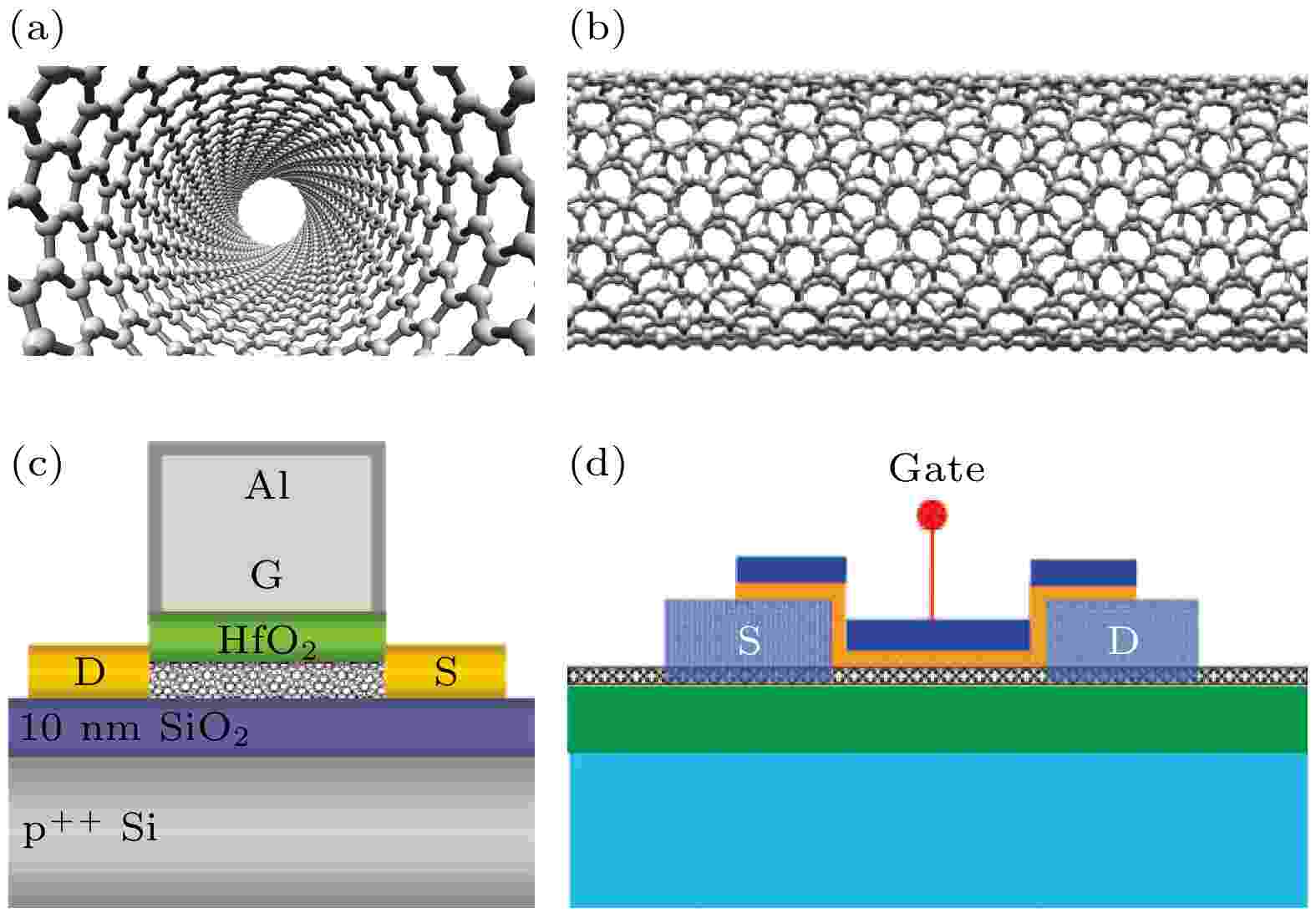
2022, 71 (6): 068503.
doi: 10.7498/aps.71.20212076
Abstract +
In the past 60 years, silicon-based semiconductor technology has triggered off the profound change of our information society, but it is also gradually approaching to the physical limit and engineering limit as well. Thus, the global semiconductor industry has entered into the post-Moore era. Carbon nanotube has many excellent electronic properties such as high mobility and ultra-thin body, so it has become a hopeful candidate for the new semiconductor material in the post-Moore era. After more than 20 years of development, carbon based electronic technology has made fundamental breakthroughs in many basic problems such as material preparation, Ohmic metal-semiconductor contact and gate engineering. In principle, there is no insurmountable obstacle in its industrialization process now. Therefore, in this paper the intrinsic advantages of carbon based electronic technology in the post-Moore era is introduced, the basic problems, progress and optimization direction of carbon based electronic technology are summarized, the application prospects in the fields of digital circuits, radio frequency electronics, sensing and detection, three-dimensional integration and chips for special applications are presented. Finally, the comprehensive challenges to the industrialization of carbon based electronic technology are analyzed, and its future development is also prospected.
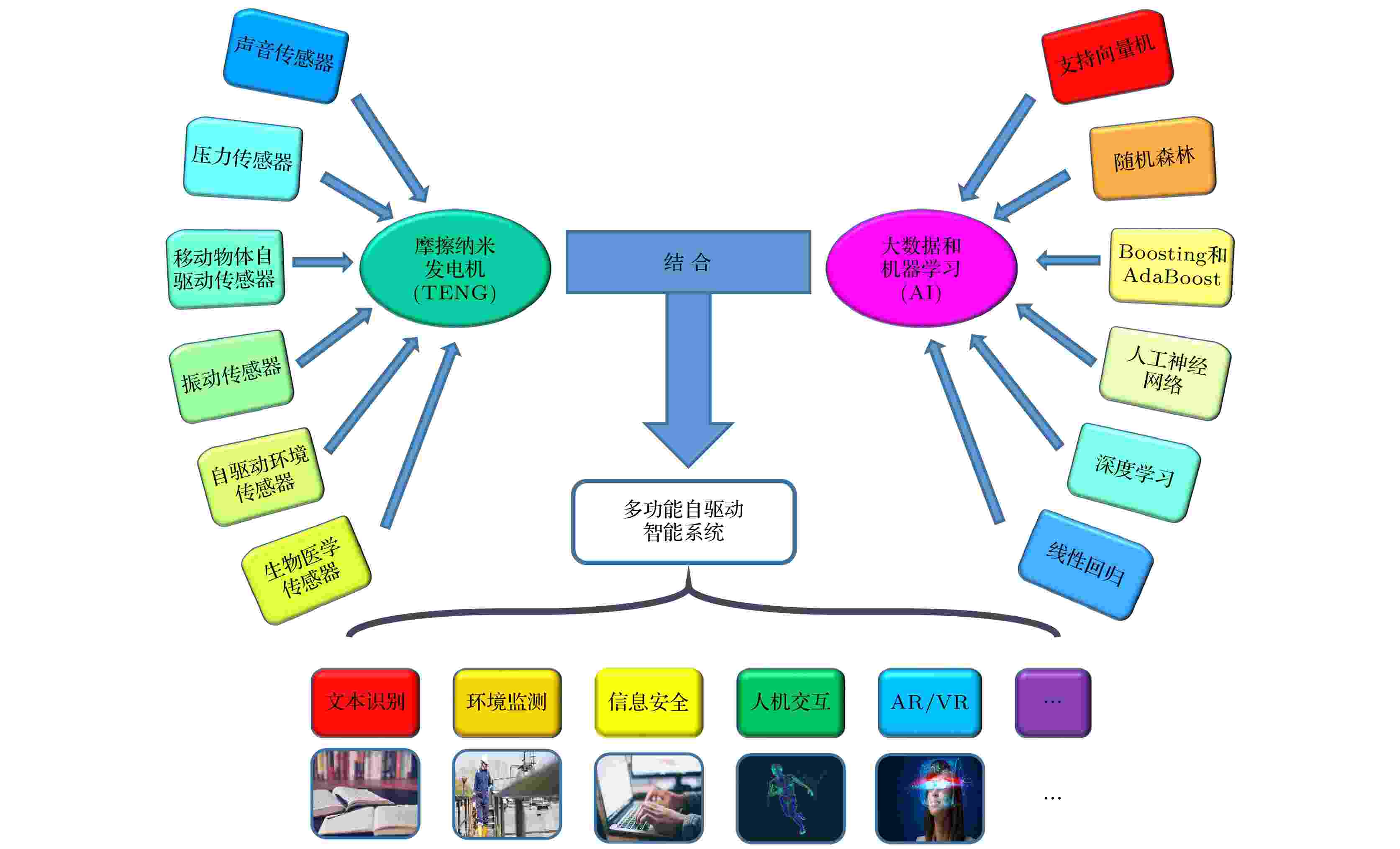
2022, 71 (7): 078702.
doi: 10.7498/aps.71.20211632
Abstract +
In the era of The Internet of Things, how to develop a smart sensor system with sustainable power supply, easy deployment and flexible use has become an urgent problem to be solved. Triboelectric nanogenerator (TENG) driven by Maxwell’s Displacement Current can convert mechanical motion into electrical signals, thus it can be used as a self-powered sensor. Sensors based on TENGs have the advantages of simple structure and high instantaneous power density, which provide an important means to build intelligent sensor systems. Meanwhile, machine learning, as a technique with low cost, short development cycle, and strong data processing capabilities and predictive capabilities, is effective in processing the large amount of electrical signals generated by TENG. This article combines the latest research progress of TENG-based sensor systems for signal processing and intelligent recognition by employing machine learning techniques, and outlines the technical features and research status of this research direction from the perspectives of traffic safety, environmental monitor, information security, human-computer interaction and health motion detection. Finally, this article also in-depth discusses the current challenges and future development trends in this field, and analyzes how to improve in the future to open up a broader application space. It is suggested that the integration of machine learning technology and TENG-based sensors will promote the rapid development of intelligent sensor networks in the future.
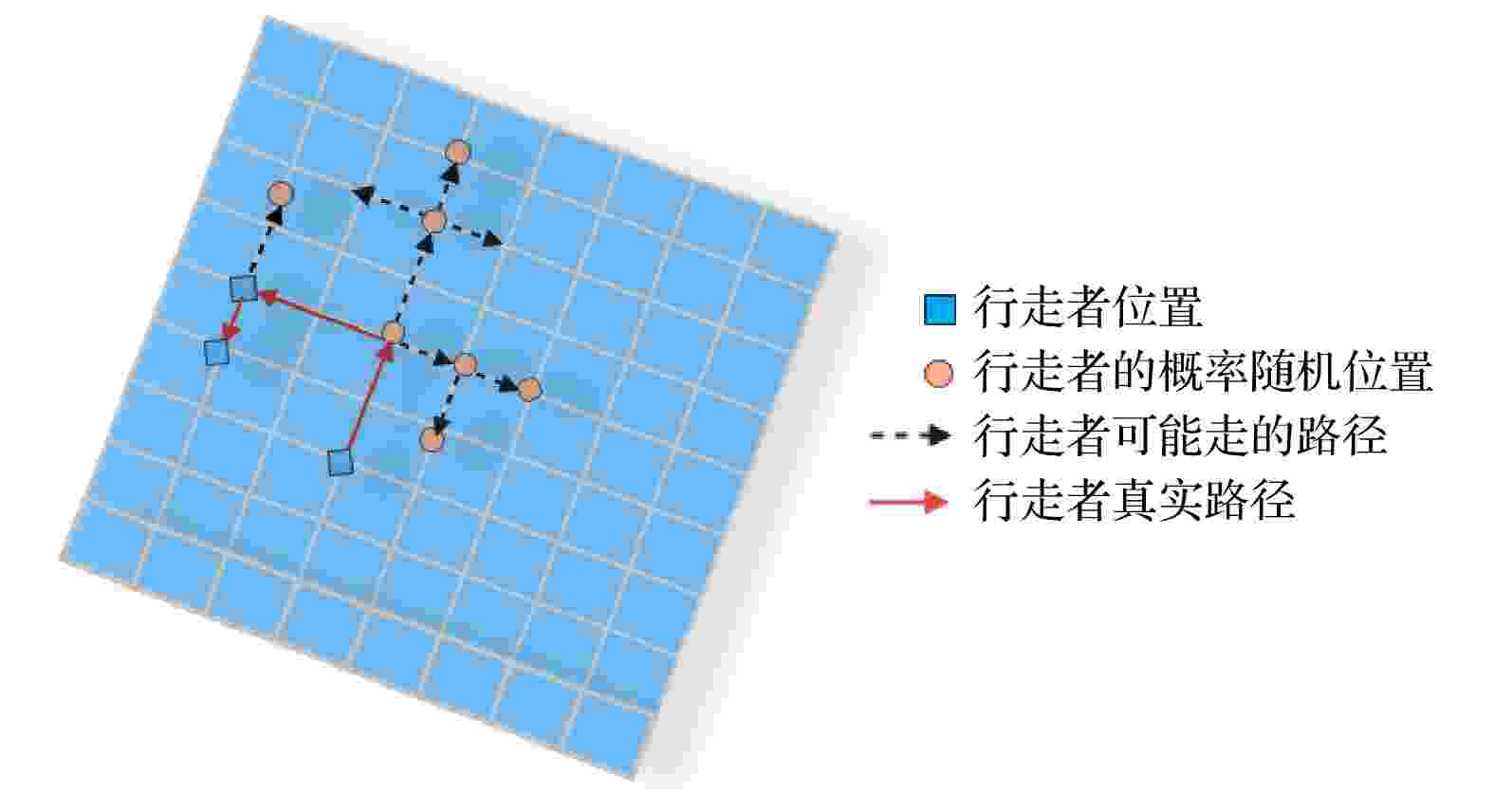
Three dimensional image encryption algorithm based on quantum random walk and multidimensional chaos
2022, 71 (17): 170303.
doi: 10.7498/aps.71.20220466
Abstract +
With the development of computer network technology, people’s requirements for information security is increasing day by day. However, the classical encryption technology has the defects of small key space and easy crack. The problems of image encryption technology in protecting image information security and private content need solving urgently. As a new type of quantum key generator, quantum random walk has a large key space. Compared with the classical random walk, the computing speed and security are significantly improved. This paper presents a three-dimensional image encryption algorithm that is based on quantum random walk and involves Lorenz and Rossler multidimensional chaos. Firstly, Gaussian pyramid is used to segment the image. Secondly, the Hamming distances of several sub images are calculated by using the random sequence generated by quantum random walk and the random sequence generated by Lorenz chaotic system in multi-dimensional chaos, and then synthesized, and the Euclidean distances between the three RGB channels of the image are calculated. Finally, the sequence value obtained from the remainder of Hamming distance and Euclidean distance, as an initial value is input into the Rossler system in multi-dimensional chaos to generate a random sequence which is used as the key to XOR the RGB channel of the image so as to create an encrypted image. The corresponding decryption scheme is the inverse process of the encryption process. In addition, in terms of transmission security, this paper uses a blind watermark embedding algorithm based on DCT and SVD to embed the watermark information into the encrypted image, so that the receiver can extract the watermark and judge whether the image is damaged by the attack in the transmission process according to the integrity of the watermark information. If it is not attacked maliciously, the image will be decrypted. This operation further improves the protection of image information security.The experimental results show that the peak signal-to-noise ratio of the encrypted image is stable between 7 and 9 and the encryption effect is good, the GVD score is close to 1, the correlation of the encrypted image is uniformly distributed, and the correlation coefficient is close to 0, and the key space is 2128 in size and the encrypted histogram is evenly distributed, showing a high ability to resist statistical analysis attacks.
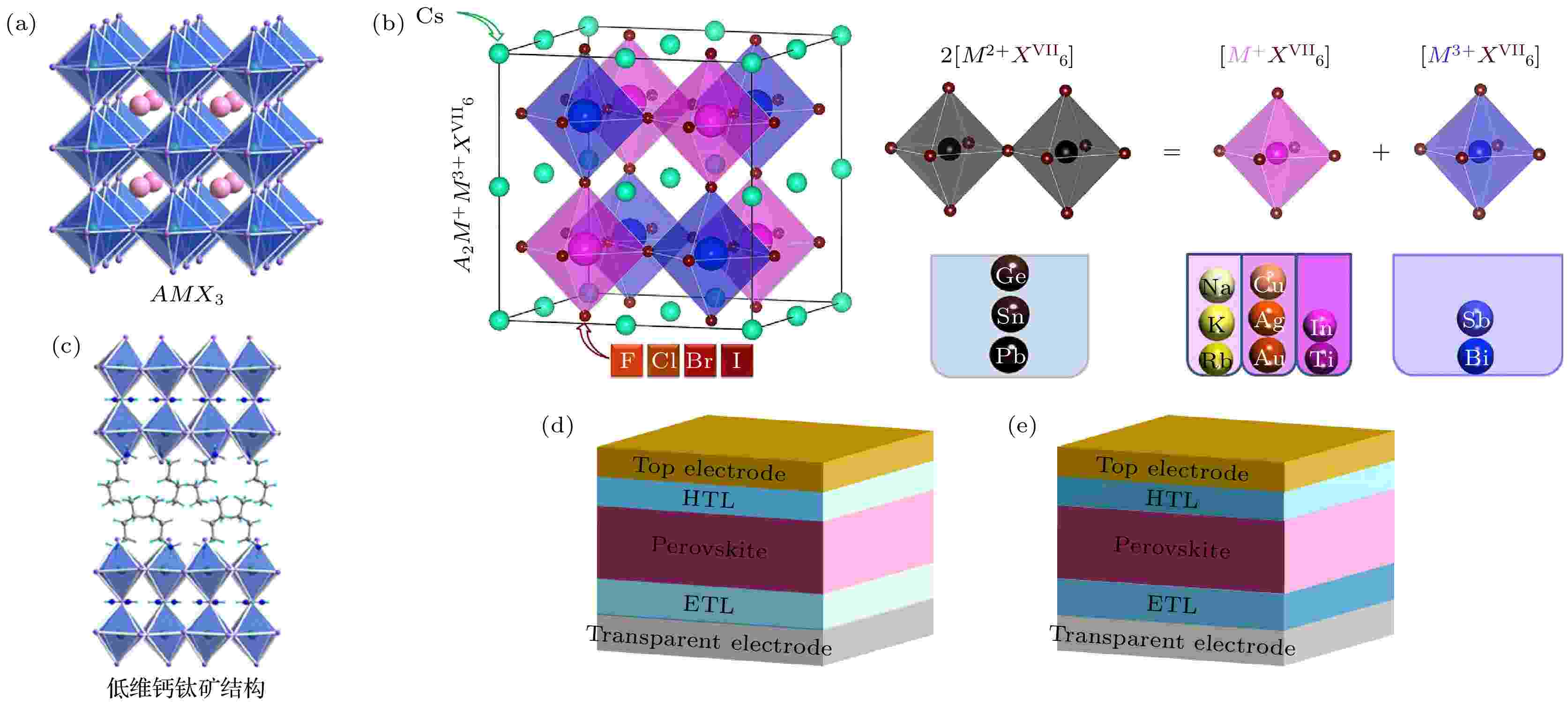
2022, 71 (16): 166801.
doi: 10.7498/aps.71.20220359
Abstract +
Research on perovskite solar cells is prevalent because of their excellent photovoltaic performance. Most of the perovskite films are prepared by polycrystalline perovskite films and low-temperature solution method, thus inevitably creating a high density of defects, including point defects and extended defects. These defects can also be divided into two types: shallow-level defects and deep-level defects. The multiple types of defects are the main cause of nonradiative recombination, which will limit the enhancement of photovoltaic properties and stability of solar cell devices. In this paper, we review the latest advances in defect passivation and describe in detail the mechanisms of different methods to passivate defects at the surface and interface of perovskite films to reduce nonradiative recombination. We also summarize the research results about the defect passivation to reduce the deep energy level traps by Lewis acid and base, anion and cation, and the results about the conversion of defects into wide band gap materials as well. The effects of various strategies to modulate the mechanism of passivation of perovskite surface/interface defects are also elaborated. In addition, we discuss the intrinsic link between crystal defects and device stability, and provide an outlook on the feasibility of defect passivation strategies in future research.
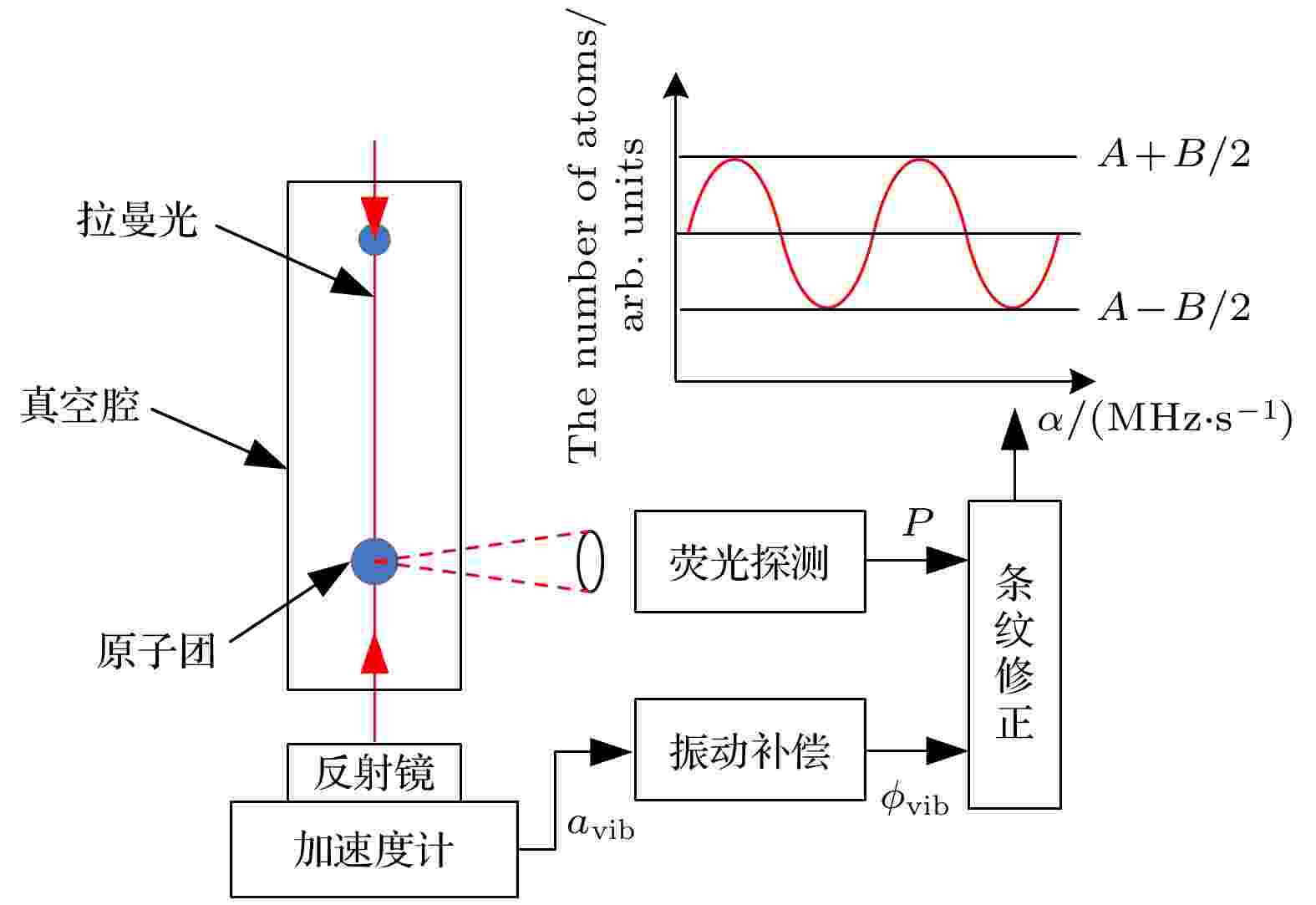
2022, 71 (2): 026701.
doi: 10.7498/aps.71.20211449
Abstract +
Dynamic gravity measurements can improve the survey efficiency of the gravity field, and can play an important role in implementing the basic geological surveys, resource exploration, and geophysical research. Based on cold atom gravimeter, inertial stabilization platform and the movable vehicle device, a system for dynamically measuring absolute gravity is built, and the dynamic measurement experiments are carried out. Firstly, the noise power spectra of the vertical vibration are measured at different moving velocities, and the influence of such a vibration on the measurement of absolute gravity is analyzed theoretically. Besides, the influence on the contrasts and offsets of the atomic interference fringes are evaluated from different moving velocities, then the effect of vibration compensation in the dynamic measurement environment is analyzed. When the maximum moving speed is 5.50 cm/s and the maximum vibration amplitude is 0.1 m/s2, the atomic interference fringes can still be rebuilt based on the technology of vibration compensation. On this basis, the atomic interference fringes are obtained at different values of T and different moving velocities, then the absolute gravity value in the dynamic measurement environment is evaluated. After the correction of the systematic system and subtraction by the initial value of absolute gravity, the final measured result is (–1.22 ± 2.42) mGal. Finally, the experiment on the static absolute gravity is conducted, and the two values are found to be not much different from each other through comparing the static measurement data with the dynamic measurement data. The experiment of dynamic absolute gravity measurement in this paper may provide the helpful reference data for the dynamic absolute gravity measurement with moving vehicles.

2022, 71 (11): 114301.
doi: 10.7498/aps.71.20211932
Abstract +
In recent years, the vibration and noise reduction performance of military aircraft has become an important index to measure its performance. In order to solve the problem of low-frequency noise generated by military aircraft, a novel Helmholtz two-dimensional phononic crystal is constructed in this paper. The structure adopts maze-shaped air channel and adds rigid oscillators. On condition that the lattice constant is 62 mm, the lower limit of the first band gap is reduced to about 15 Hz. The structure has four complete band gaps in a range of 0–500 Hz, specifically, they being 15.223–17.464 Hz, 107.46–200.68 Hz, 231.18–310.68 Hz, and 341.14–404.49 Hz. In addition, the sound reduction index of the structure reaches 25 dB at 15 Hz, and two peaks higher than 150 dB appear at about 107 Hz and 231 Hz. which shows distinct sound insulation capability in the low-frequency range. It has engineering significance in controlling the low-frequency noise in the aircraft cabin. The cause of the band gap is explored by analyzing the vibration mode and sound pressure field. The “spring-oscillator” of the structure model is established by the method of “Mechanical-acoustic analogy”. The finite element method and transfer matrix method are used to calculate the upper limit and the lower limit of the first band gap. It is shown that for the first gap of the structure, the results obtained by the two methods are similar, which indicates the correctness of the model hypothesis. Secondly, the effects of structural parameters such as the lattice constant, the length of the air channel and the oscillator material on the first band gap are investigated by finite element method and equivalent model method. It is obtained that the increase of the length of air channel and lattice constant will reduce the lower limit of the first band gap, with other structural parameters remaining unchanged. Moreover, the increase of the density of the oscillator material can effectively reduce the upper limit and lower limit of the second band gap, which further reveals the essence of the formation of the band gap of the structure and verifies the accuracy of the equivalent model. This study provides theoretical support for low frequency noise control and broadens the design of low-frequency phononic crystals.

2022, 71 (14): 148401.
doi: 10.7498/aps.71.20220098
Abstract +
Spiking neural network (SNN) as the third-generation artificial neural network, has higher computational efficiency, lower resource overhead and higher biological rationality. It shows greater potential applications in audio and image processing. With the traditional method, the adder is used to add the membrane potential, which has low efficiency, high resource overhead and low level of integration. In this work, we propose a spiking neural network inference accelerator with higher integration and computational efficiency. Resistive random access memory (RRAM or memristor) is an emerging storage technology, in which resistance varies with voltage. It can be used to build a crossbar architecture to simulate matrix computing, and it has been widely used in processing in memory (PIM), neural network computing, and other fields. In this work, we design a weight storage matrix and peripheral circuit to simulate the leaky integrate and fire (LIF) neuron based on the memristor array. And we propose an SNN hardware inference accelerator, which integrates 24k neurons and 192M synapses with 0.75k memristor. We deploy a three-layer fully connected network on the accelerator and use it to execute the inference task of the MNIST dataset. The result shows that the accelerator can achieve 148.2 frames/s and 96.4% accuracy at a frequency of 50 MHz.
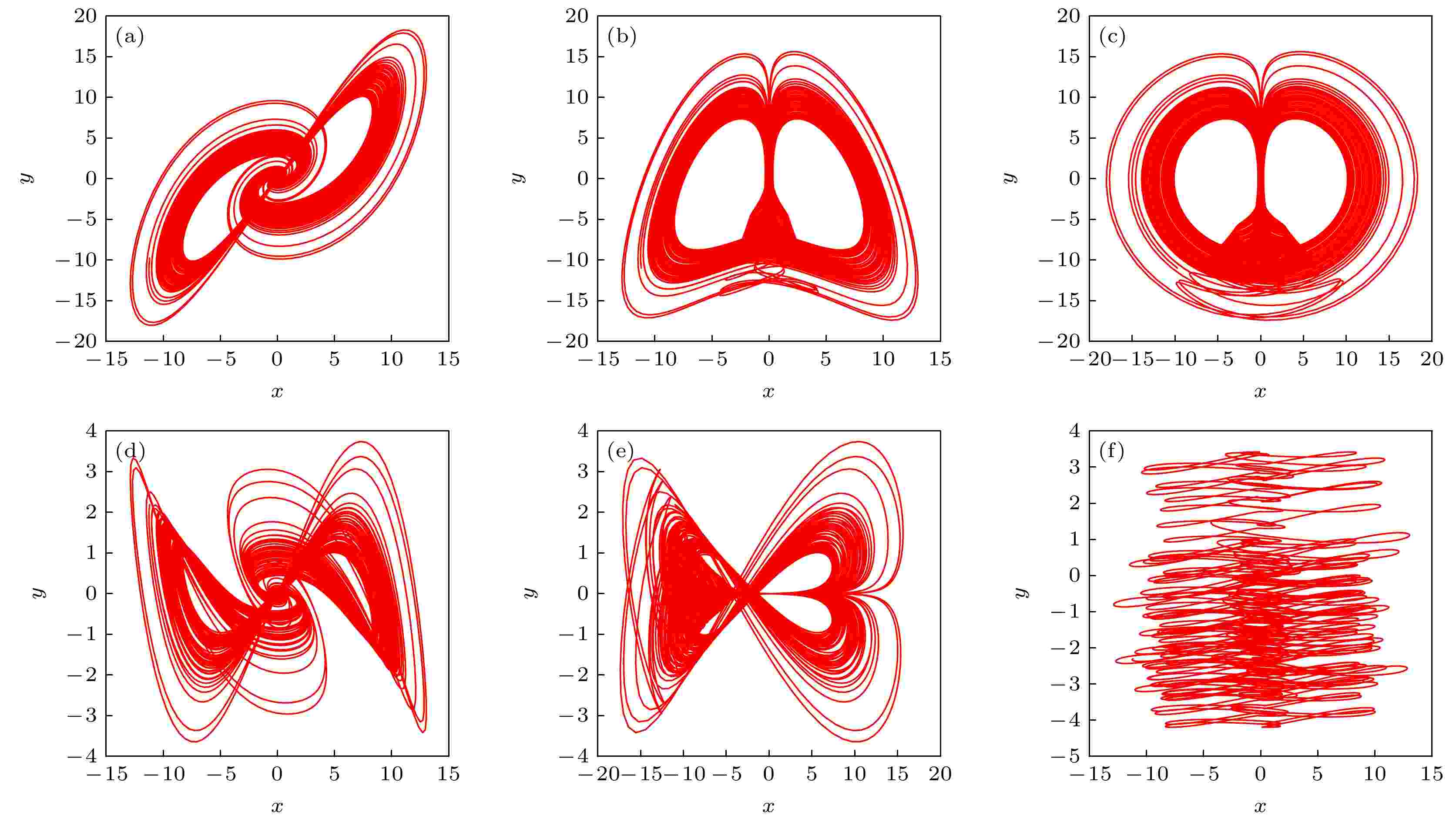
2022, 71 (24): 240502.
doi: 10.7498/aps.71.20221423
Abstract +
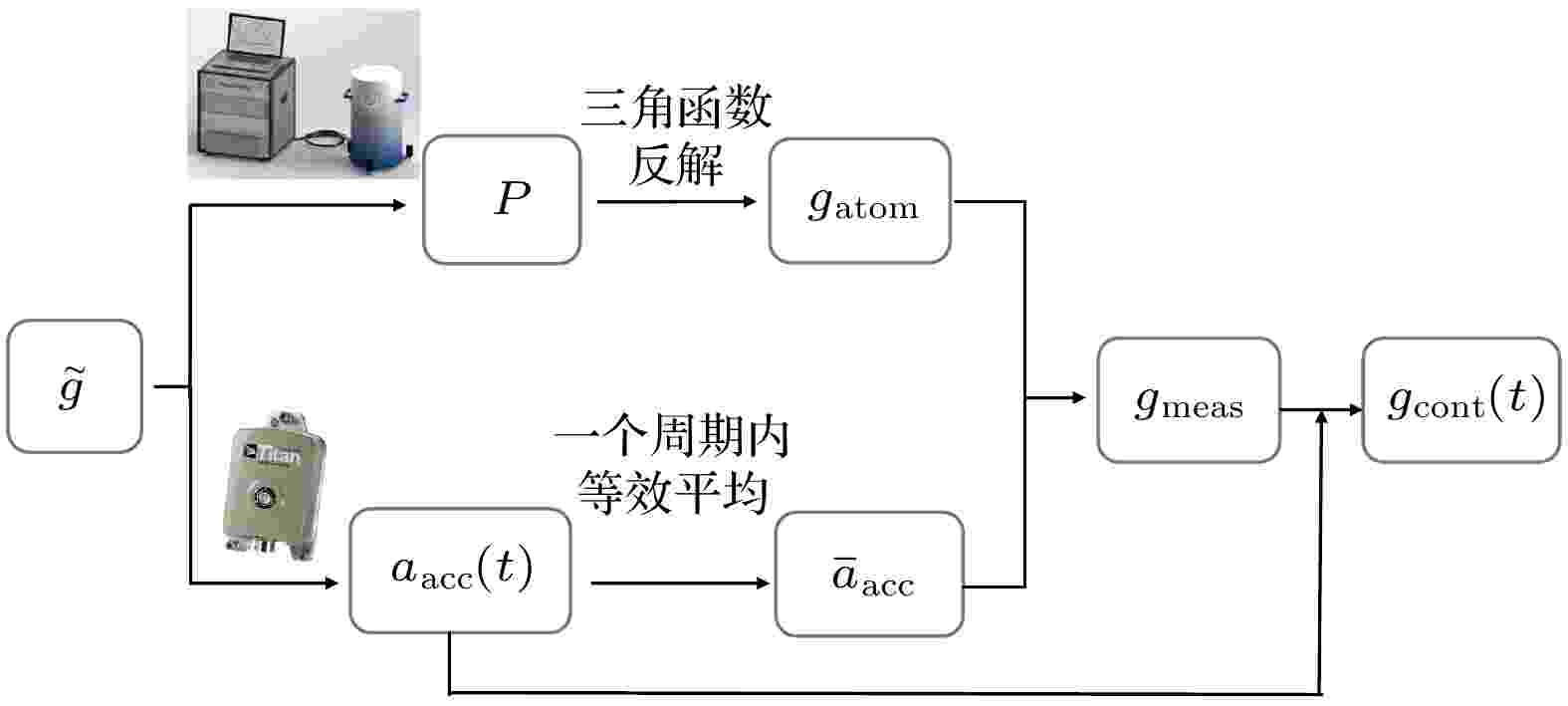
2022, 71 (11): 113701.
doi: 10.7498/aps.71.20220113
Abstract +
Cold atom gravimeter is gradually developing towards miniaturization, dynamics and practicality. It is of great significance to apply it to deep and far sea absolute gravity measurement and underwater long navigation time and high-precision navigation. At present, most cold atom gravimeters are still in the state of laboratory static base or quasi-static base measurement, which is difficult to meet the gravity measurement needs in dynamic application scenarios. Therefore, the research on "static to dynamic" of cold atom interferometric gravity measurement is very urgent and key. In this paper, the basic principle of dynamic measurement is analyzed, the basic method of combined measurement of cold atom gravimeter and accelerometer is given, a set of absolute dynamic gravity measurement system based on cold atom gravimeter and inertial stabilization platform is built, and the ship-borne dynamic measurement experiment is carried out by using the combined measurement method of cold atom gravimeter and traditional accelerometer. Firstly, the continuous absolute gravity measurement for about 40 h is carried out in the laboratory static environment to preliminarily evaluate the performance of the cold atom gravimeter. The sensitivity is 447 µGal/$\sqrt {{\text{Hz}}} $ , and the long-term stability can reach 2.7 µgal. On this basis, the ship-borne experiment is conducted, the survey ship sails on the lake at a speed of about 4.6 kn, and the ship-borne absolute dynamic gravity measurement is carried out by means of repeated survey lines. After evaluation, the internal coincidence accuracy of the four repeated survey lines is 2.272 mGal, and the external coincidence accuracy values of the four voyages are 2.331, 1.837, 3.988 and 2.589 mGal respectively. Finally, according to the experimental results, the possible problems are further analyzed and summarized. This experimental study provides preliminary verification and technical scheme reference for marine absolute dynamic gravity measurement.
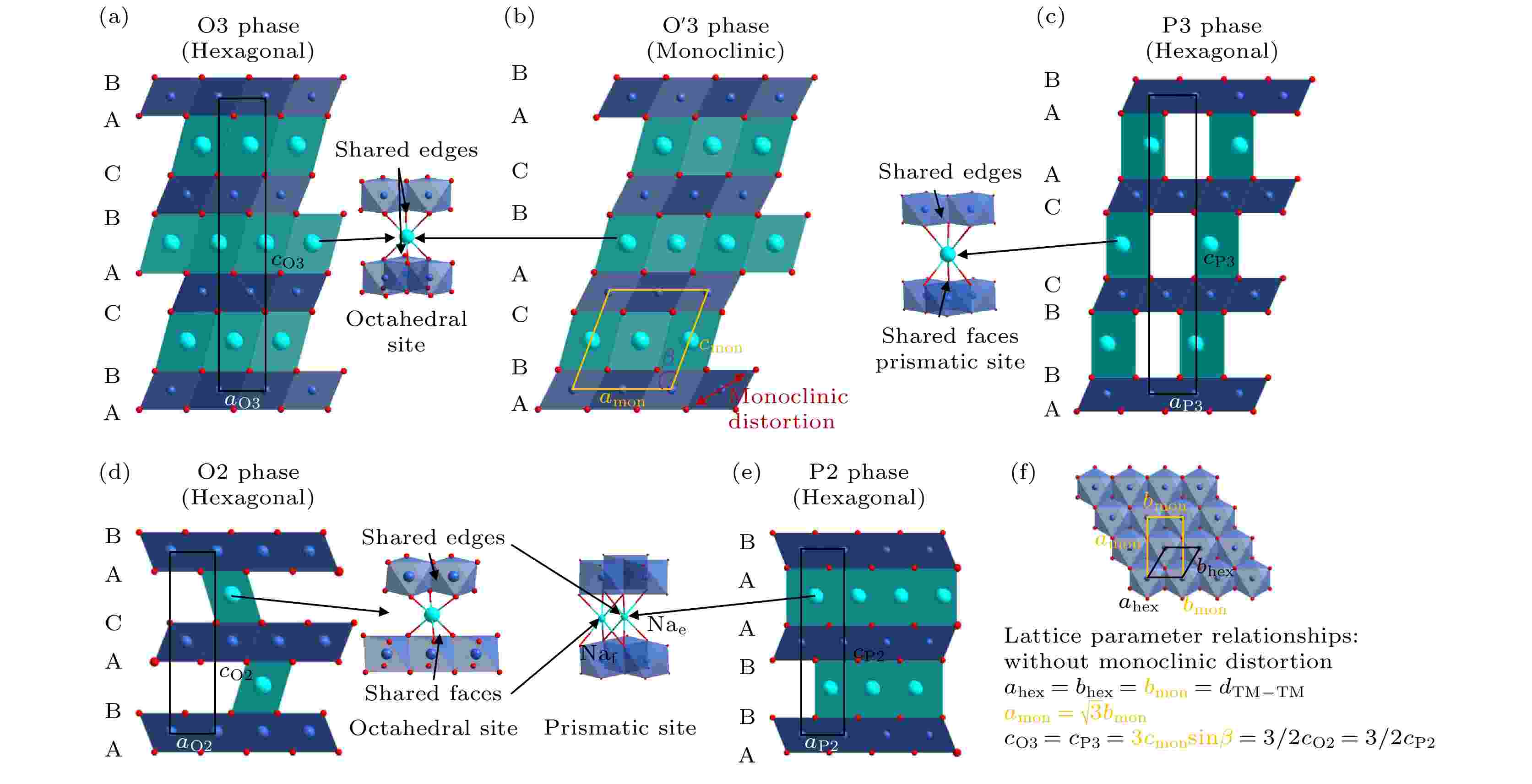
2022, 71 (10): 108801.
doi: 10.7498/aps.71.20220291
Abstract +
Na-ion batteries possess great potential applications in the large-scale energy storage. The Na-ion layered oxide cathode (NaxTMO2) has received increasing attention in scientific and industrial research due to its high capacity, easy manufacture, adjustable voltage, and low cost. However, the larger the Na+ radius and the stronger the Na+-Na+ electrostatic repulsion is, which will lead to various structural configurations and complex structural transitions, resulting in multiple structure-property connections. In this paper, the structural types of Na-ion layered transition metal oxide cathode materials are introduced, and their structural evolutions during Na+ de/intercalation are summarized for revealing the mechanism for structural transformation of Na-ion layered transition-metal oxide cathode material and its effect on electrochemical performance; the existing challenges are discussed; the improvement strategies are proposed finally.
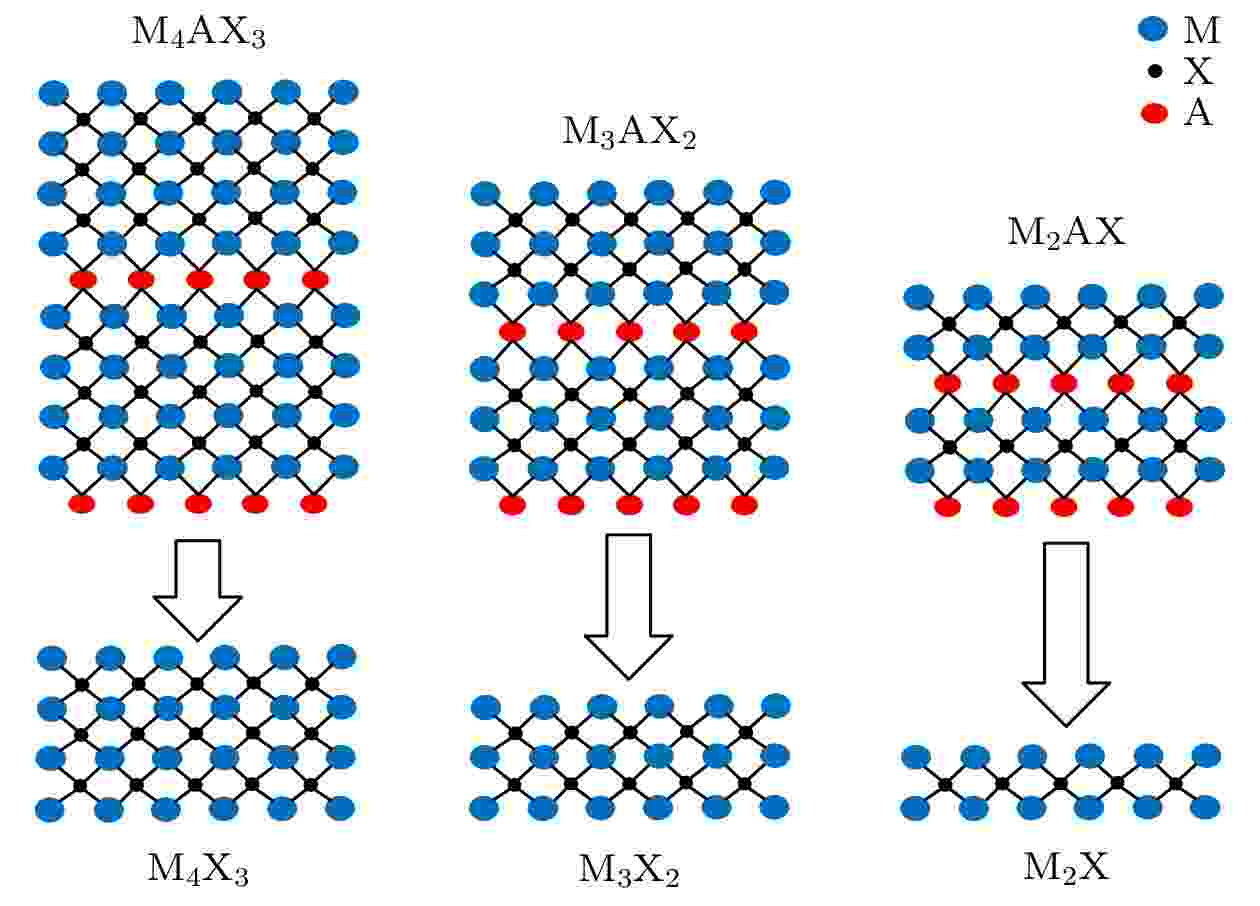
2022, 71 (1): 010701.
doi: 10.7498/aps.71.20211048
Abstract +
Since the discovery of graphene materials, two-dimensional materials have been widely recognized and gradually applied. Two-dimensional transition metal carbides (MXenes) have better mechanical, magnetic and electrical properties than traditional two-dimensional materials. In this work, Ti3C2Tx samples are prepared by etching Ti3AlC2 with different etching agents for the solutions of HF and LiF/HCl. The effects of etching agents on the structure and gas sensing properties of Ti3C2Tx materials are studied by scanning electron microscopy (SEM), X-ray photoelectron spectroscopy (XPS), and gas sensing properties analysis. The material structure analysis shows that both HF and LiF/HCl etching agents have good etching effect on Ti3C2Tx material. The results of gas sensing properties show that the gas sensing properties of Ti3C2Tx prepared by LiF/HCl etching agent is better than by HF etching agent, and the wide range, high sensitivity and high stability of NH3 detection can be achieved at room temperature. The analysis shows that the high sensing performance of Ti3C2Tx prepared by LiF/HCl solution etching is mainly due to the high proportion of —O and —OH functional groups on the surface of Ti3C2Tx. The experimental studies can lay a theoretical foundation for studying the gas sensing and practical application of Ti3C2Tx based sensor.

- 1
- 2
- 3
- 4
- 5
- ...
- 35
- 36











